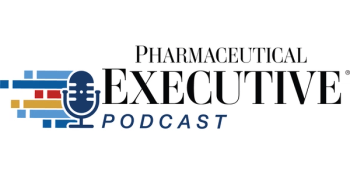
GT-02287 Shows Promise in Parkinson's Patients with and Without GBA1 Mutation
Gene Mack, CEO, GAIN Therapeutics, highlights early Phase Ib data showing GT-02287 may enhance neuroprotection across a wider spectrum of Parkinson’s patients regardless of genetic status.
In an interview with Pharmaceutical Executive, Gene Mack, CEO, GAIN Therapeutics, shared promising updates on the company’s lead candidate, GT-02287, a novel therapy in development for Parkinson’s disease. Enrollment for the Phase Ib open-label trial wrapped three months ahead of schedule, driven by growing clinician confidence in the drug’s safety and therapeutic potential. Originally designed for patients with a GBA1 gene mutation—a known disruptor of the GCase enzyme—GT-02287 has shown early signs of benefit across a broader Parkinson’s population. With biomarker data expected in Q4 2025, GAIN is preparing for a pivotal Phase II trial in early 2026 while weighing financing options and potential strategic partnerships, all hinging on forthcoming efficacy and biomarker insights.
Pharmaceutical Executive: What patient population is being targeted in the current trial, and are there plans to expand the indication based on these findings?
Gene Mack: The current indication is broadly for Parkinson’s disease. Initially, when we began developing GT-02287, we believed it would be most effective in patients with a specific gene mutation—GBA1. This gene encodes the enzyme glucocerebrosidase, or GCase for short. When GBA1 is mutated, GCase is produced in very low quantities and functions poorly. GT-02287 is designed to restore that impaired enzyme function.
Our early focus was on Parkinson’s patients with the GBA1 mutation, as we thought they would benefit the most. However, we’ve since observed that we can activate the GCase target in healthy individuals as well. This suggests that even Parkinson’s patients without the mutation—those with idiopathic Parkinson’s—could also benefit. Enhancing GCase activity could support cellular and neuronal health and provide neuroprotective effects, regardless of mutation status.
That’s why our current Phase 1b trial includesboth idiopathic Parkinson’s patients and those with the GBA1 mutation, and we expect to take a similar approach in Phase II. By the fourth quarter, we’ll have results from our Phase Ib study, which includes analysis of cerebrospinal fluid. That data will help us understand whether the GBA1 mutation affects drug efficacy, and whether there are differences in response between the two populations. That readout will be the next major milestone for GT-02287.
And just to circle back to your earlier question—that’s what’s next.
Full Interview Summary: Enrollment for the Phase Ib trial of GT-02287, a novel therapeutic candidate for Parkinson’s disease, was completed three months ahead of schedule. While the trial targeted a small cohort, momentum increased as clinicians grew more comfortable with the drug’s safety profile and potential. Initially cautious due to the investigational nature of the therapy, sites became more confident in recommending the study, reflecting growing optimism about GT-02287’s promise.
The ongoing Phase Ib trial is an open-label pilot involving 15 to 20 patients with Parkinson’s disease, including those with idiopathic PD and those with a GBA1 gene mutation. This gene mutation disrupts the production of glucocerebrosidase (GCase), a key enzyme that GT-02287 is designed to restore. Although the drug was initially developed for GBA1-mutated patients, early findings suggest it may benefit a broader PD population. The Phase Ib readout, expected in Q4 2025, will include biomarker data from cerebrospinal fluid to assess differential efficacy between patient subtypes.
Looking ahead, a larger, double-blind Phase II trial is planned for early 2026, enrolling 100–200 patients to validate efficacy signals in a blinded setting and mitigate bias seen in open-label designs.
GT-02287 was developed using the company’s Magellan AI platform, which identifies novel binding pockets on target proteins and screens both known and hypothetical molecules. Magellan extends drug discovery into previously unexplored chemical space by predicting interactions that can be synthesized and tested.
Partnership discussions are ongoing with large pharma, biotech, and mid-cap firms. Final decisions around financing or partnering will depend on Phase Ib results. The company is prepared to either self-fund the $50–60M Phase II trial or advance through a strategic collaboration, depending on the biomarker and efficacy data in Parkinson’s patients.
Newsletter
Lead with insight with the Pharmaceutical Executive newsletter, featuring strategic analysis, leadership trends, and market intelligence for biopharma decision-makers.




